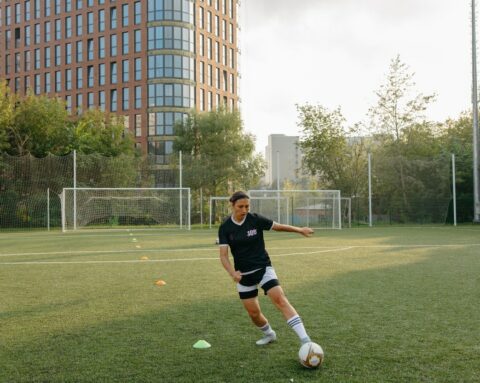The importance of having good posture is something that generally clicks for all of us at some point in time. Once it was a statement that annoyed us, telling us to stand up straight and put our shoulders back.
However, those comments had more benefits than we understood at a younger age. Posture is a huge factor in doing simple day to day activities that we never even consider. Our effectiveness in rising from a chair, going up and down stairs or walking to the shops are greatly influenced by our posture. This is largely because posture is extremely important to our balance and keeps our weight centred above our feet.
Having good posture refers to the body’s alignment and positioning. If you are lying down, standing or sitting, gravity places a force on our ligaments, muscles and joints. Good posture allows for even distribution across our body so that no one point is overstressed.
Having good posture can provide you with higher energy levels, confidence and support for chronic back pain conditions. There are five main types of posture called healthy, kyphosis, flatback, swayback and forward head. If you think you may be experiencing one of these posture issues it is important to get in touch with us at Studio Musculoskeletal to plan your next steps.
The long-term effects for bad posture are very important to understand and it is crucial that you act to correct your posture as soon as possible. Poor posture has a very high risk of spinal degeneration which can lead to cervical degenerative disc disease and cervical osteoarthritis. Additionally, the increase in stiffness can lead to a reduced range of motion and muscle imbalances where some will become weak and ineffective.
In healthy posture, your body will be aligned with your ears over your shoulders. This, in turn, lines up with your hips and over your angles. Kyphosis is extremely common and refers to your upper back region curving greater than 50 degrees. This will make it look like you are hunching over.
Kyphosis can commonly lead to stiffness and back pain. Flatback occurs when the spine loses its lower curve and becomes flat. This can lead to you losing balance and tending to lean forward. Flatback can make it so you may have constant leg or back pain and have difficulty standing straight. Swayback is the fourth condition where your posture can exaggerate your natural spinal curve.
In this condition, you will notice the spine is curving inward at your lower back and neck area. Swayback is commonly caused by things such as pregnancy, obesity and osteoporosis. The final condition is called forward head, where the head is extended past the shoulders. Activities such as sitting at a computer all day can lead to our neck tilting forward in a natural position.
This often leads to stiffness, tension or pain your back, shoulders and neck. It is important to remember that your neck is designed to stay vertical to support the weight of your head and poor posture puts extreme pressure on your spine.
It is important for us to now understand what the major causes of our bad posture are. A combination of genetics, diseases, injury or bad genetics are some of the major factors that we can’t control. However, with that being said, let’s take a look at some of the factors we may be able to influence. The number one factor outside of the above that can affect our posture is injury and injury recovery.






